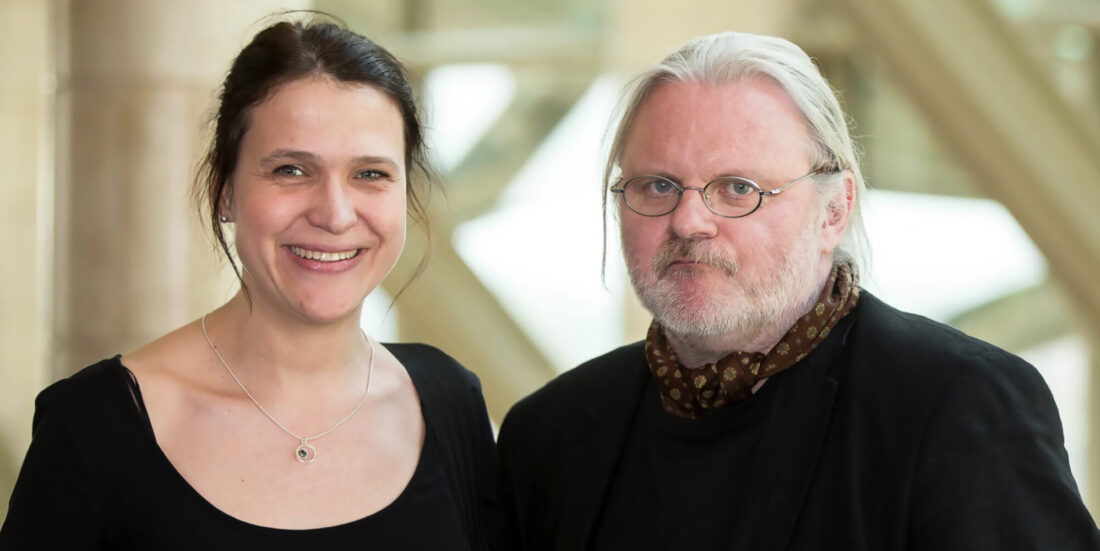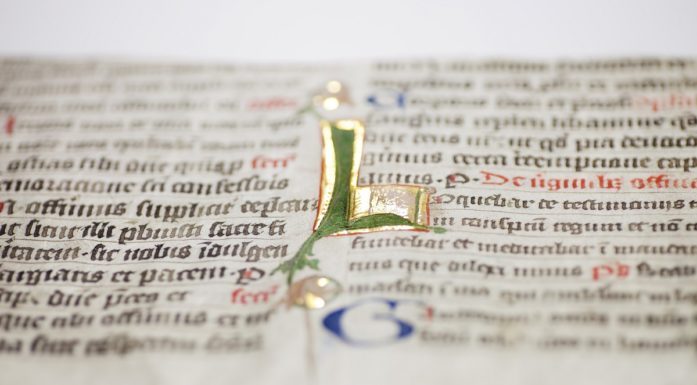Jon Fosse is both high culture and a champion of the banal
In a literary conversation, Jon Fosse said “I am who I am”, which perfectly sums up the awkward, yet insistent way he writes.
Ever since his debut in 1983, Jon Fosse has held a prominent voice in Norwegian literature that many people felt was so strongly connected to Norwegian Nynorsk and Western Norway that it could not be heard and understood outside Norway – and certainly not outside Scandinavia.
But it was. Fosse’s international breakthrough around the turn of the millennium showed that there was something universal and contemporary about his work. He portrays little people facing life’s big questions. They are “little” in the sense that they are usually quite ordinary, often nameless everyday characters that readers can readily empathise with.
Fosse doesn’t seem interested in revealing his characters’ deepest secrets, or passing judgement on them. He doesn’t write from an omniscient perspective, nor does he want us to understand the characters better than they are able to understand themselves.
In this simple way, Fosse allows us to face the big questions in life: about the inexplicability of birth and death, about love and jealousy, anxiety about being alone and about being together, about friendship and faith in God.
Little people facing life’s big questions.
Fosse has been compared to the greatest writers of classical modern literature, from Kafka to Pinter, from Beckett to Ibsen.
These comparisons ring true – not because he has directly borrowed elements from these authors, but because his texts explore the basic conditions of what it is like to live today, in a time characterized by uncertainty.
However, Fosse’s work is never tendentious; he never writes anything directly political about war or the climate crisis. Admittedly, we catch glimpses of a sociological backdrop in his works, with depictions of abandoned houses by the sea, and unsuccessful grown men who stay at home and are unable or unwilling to achieve their true potential.
If Fosse had passed moral judgement on his characters, it might have been easier to understand his simple but enigmatic narratives. We could then be done with his people, having ascertained what was wrong or missing in their lives. However, the exact opposite happens.
There is always a secret in Fosse’s texts. In his latest works, there is a religious mysticism that we only get a hint of, but never quite get access to. Fosse manages to maintain this tension in relation to the unspoken, both in a several hundred page tome such as “Septology” and in shorter novels such as “Morning and Evening”, which can almost be read in one sitting.
It is this intensive and condensed experience of closeness to a wordless insight that he wishes to facilitate in his drama. In his essay ‘An Angel Walks Through the Stage’, he states that he wants to write in such a way that quiet but meaningful moments can occur on stage.
Fosse writes personally, he is very clearly present in his texts, but he is never private, and there is no point looking for autobiographical clues in his writing. However, he does have a diverse body of writing.
There is always a secret in Fosse’s texts. In his latest works, there is a religious mysticism that we only get a hint of but never quite get access to.
He is best known for his prose and drama. In addition, he has also written a number of personal and philosophical essays, children’s books and has given a new “Fossean” linguistic touch to classical texts in his transcreations.
These are clearly more than ordinary translations, because his adaptations, such as the Sophocles trilogy entitled “Death in Thebes”, are also performed abroad. Otherwise, there is seemingly no end to the number of places Fosse’s plays have been performed around the world.
His very first play, “Someone is Going to Come”, is among those most performed, both as a play and an opera. With another of his most popular plays, “Dream of Autumn”, he confirmed his place in a long European tradition of dream play thematics.
In his dreamlike play texts, we see that he is both a bearer of tradition and a force for renewal. Using an insistent repetition that can also be seen in his prose, he manages to create a landscape between life and death, between memories and visions of the future, between a timelessness and a feeling of being present here and now.
That said, there are critics who claim that Fosse’s texts consist of nothing more than serial repetition and that all his works are very similar.
There are some clear recurring motifs in his prose, drama and poetry that create an intertextual echo between the texts. However, the repetitions are never identical; they most closely resemble the waves of the ocean, as Fosse himself writes in his essay “The Large Fish Eyes” from 1993.
They create rhythm and shifts in meaning through small changes and gradual transitions, and this can appeal both to our emotions and to our intellect.
The opposite has also been said about the repetitiveness of Fosse’s texts, i.e. that it breaks down meaning rather than constructs it. His language can be perceived as being a credible impression of how our thoughts follow on from each other, how we speak in everyday life, how we fail to finish our sentences and start anew.
It is stylized and authentic, Western Norwegian and universal, high culture and banal, music and silence, faith in God and despair. The list of contradictions is endless. But perhaps we should simply also accept Fosse’s simple acknowledgement: “I am who I am”.
It was high time that Jon Fosse received the Nobel Prize in Literature in 2023. It is a celebration of Norwegian Nynorsk, a celebration of Norwegian literature and a celebration of Jon who, to the delight of most people, will continue to write as he has always done.
This article has also been published in Adresseavisen.





